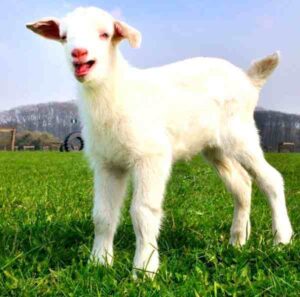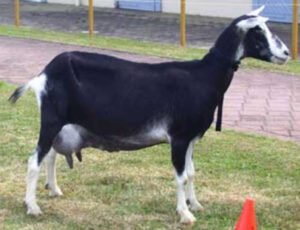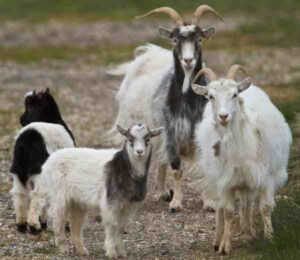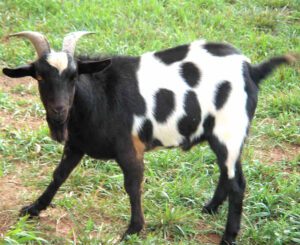Goats of different age and gender are called by different name. Usually goats with approximately 12 to 24 months old with two permanent incisor teeth are called yearling goat.
A yearling goat has just passed beyond it’s first kid stage and now a young goat who is going into his second year.
Goats go through various life stages, like all other animals. After birth, both male and female goats are called kids. A female goat under one year of age is called a doeling and a male goat under this age is called a buckling.
What is a Yearling Goat
Yearlings are the goats who have just passed their first year of kid stage and going into their second year. Both male and female goats within this age are called yearlings.
Yearling goats are almost mature. They are less dependent upon their mom and show more interest in herd mates.
Some people call both male and female goats as kids until they gain sexual maturity (usually for their first year of life). After this age they are generally reclassified and called by different name according to their production purpose.
For example, the yearling goats used for milk and kids production are called doe, castrated bucks for meat production are called wethers and the male goats used for breeding purpose are called bucks.
The yearlings are often called doeling goat who have not produced offspring yet.
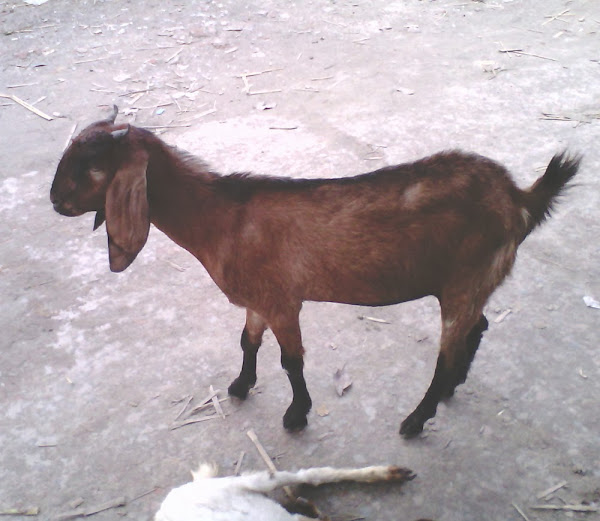
Usually male goats gain sexual maturity faster than the female ones. Some male goats are kept sexually inactive for their entire life, those goats are called wethers. A yearling goat before becoming fully mature bucks is called bucklings.
The First Year
By the end of your goat kid’s first year, they will be sexually mature and nearly full grown. Although in this stage they are not fully developed.
They will continue to grow, add weight, develop physically and emotionally for at least next one year or two. During the first year, your goats will replace their middle two baby teeth by larger teeth.
They will continue replacing their rest teeth for four years or until they replace all their baby teeth and gain permanent teeth.
Usually both male and female goats gain sexual maturity within their one year of age. Although female goats of some breeds gain puberty within their 4 months of age.
And the bucks of some goat breeds gain sexual maturity within their 2 to 3 months of age. And usually within one year of age, both male and female goats of almost all breeds gain sexual maturity.
Female goats will enter their first estrus and sometimes bred within their first year of age.
Although you should not bred your female goats until they reach at least 60 percent of their adult weight for avoiding all types of health problems.
So it’s a good idea to keep the male and female goats separated from each other. But it’s OK if you keep them together during their first few months.
After a couple of months separate the intact bucklings from the herd for preventing unwanted pregnancies. You can keep the wethers with the herd and sell them after reaching perfect body weight.
From Yearling to Maturity
Fully grown (both physically and emotionally) goats are called adult goats. Usually it takes about 3 years to become a goat fully grown adult. All female goats of all ages are technically does.
Although they are called by different names such as doeling (female goats under one year of age), yearling (female goats who have enter into their second year), dam (female goats who have successfully produced kids).
Some breeders also call the fully mature female goats ‘nanny’, whether they have produced kids or not. Some people also call the mature male goats as billy. And a goat aged more than 3 years are considered as a mature goat.
Raising Yearling Goat as Pets
Raising yearling goat as pets is not a bad idea. Especially through raising yearling goat as pets, you will be able to avoid the hassle of bottle feeding the babies.
Yearling wethers are best as pet. They become well behaved and very friendly with humans. But it’s really disgusting raising a yearling buck as pet. While planning for raising yearling goat as pet, consider raising two.
Because goats usually like to have company of their own species. You can raise two female, two wether, one wether and one female or a mother with a kid.


